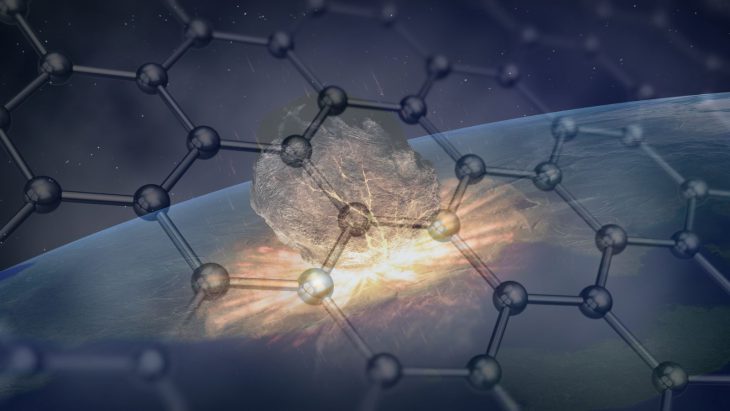Graphene is a carbon-based material used extensively in electronics, biomedical devices, semiconductors, and space and aerospace industries. What makes graphene unique and useful is its structure. It forms very thin sheets in a “honeycomb” pattern, which can efficiently conduct heat and electricity and are also strong and flexible.
While researchers could see graphene through a microscope in the 1960s, pure graphene (without other contaminants) was not isolated and analyzed until 2004, when scientists used scotch tape to separate layers of graphene from graphite, winning them the Nobel Prize in Physics! Graphite (used in pencil tips) is actually made of many graphene layers stacked upon each other.
While pure graphene is usually produced in laboratories under controlled conditions, it is often found together with graphite in nature, meaning that there is not much pure “natural” graphene. However, researchers from the Earth-Life Science Institute of Tokyo Institute of Technology, the Astromaterials Research and Exploration Science Division of the NASA Johnson Space Center, and the Earth and Planets Laboratory of the Carnegie Institution for Science recently found evidence of pure graphene in meteorites, which shows that pure graphene can be made naturally off of Earth.
A meteorite is a small piece of an asteroid, comet, or other rocky object in space that fell to Earth. “Shooting stars” are actually meteorites entering Earth’s atmosphere, and the light we see during a meteor shower is from meteorites burning up during “re-entry”. Re-entry results in some meteorites burning up completely before they reach Earth’s surface.
However, some meteorites are large or strong enough to withstand these high temperatures to eventually reach Earth’s surface. Researchers are interested in the structure and compositions of materials that make up these meteorites. Such analyses help researchers understand the age and origin of meteorites, which gives direct evidence of events such as star and planet formation or destruction that may have happened away from Earth billions of years ago. This may tell us more about which chemicals led to the origin of planets, including Earth, life on Earth, or even life beyond Earth.
In this study, researchers analyzed the structure and composition of two meteorites: Allende and QUE 94366, which were found in Mexico (1969) and Antarctica (1994), respectively. Both meteorites contain carbon, and their structure has not changed much from the asteroid, comet, or other object in space that they originally came from. These solid “parent bodies” are formed directly from gases in space more than 4.5 billion years ago, which is older than our solar system!
By using Confocal Raman Imaging Spectroscopy (CRIS), an analytical technique usually used to look for graphene in materials, researchers detected both graphite and layers of pure graphene in both meteorites. CRIS, like other spectroscopy techniques, shows “peaks” on a read-out that are unique to certain chemicals — like a signature. The scientists detected graphene by matching the CRIS signature in the meteorites with known signatures of both graphite and graphene. The pure graphene was not evenly spread out in the meteorites, but were only in sections of the meteorites made up of ancient, highly stable calcium and aluminum minerals that were resistant to the harsh conditions in space.
Because graphene was inside of these calcium/aluminum minerals in the meteorites, the researchers believe that the graphene probably didn’t come from graphite that was already in the meteorites. Instead, it is more likely that both the calcium/aluminum minerals and the graphene within them were made directly from high temperature (> 1000 degrees Celsius) carbon-containing gases in space. This is the same process by which planets and stars form, suggesting that the graphene in the meteorites could be older than the planets in our solar system! However, the graphene was also not perfectly shaped, like what would have been expected if we made graphene in a lab on Earth. The imperfect shape is likely due to the harsh conditions of space.
This isn’t the first time that carbon-based materials like graphite or graphene were found in meteorites, as nanodiamonds (basically very small diamonds) and a chemical structure called a bucky-ball were found in a few meteorites. In fact, discovery of bucky-balls on Earth also happened to result in a Nobel Prize in 1996, so perhaps the next chemical discovery in meteorites will be of a different Nobel-prize winning carbon-based material.


